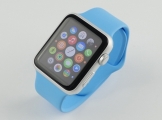|
当我使用 [self.navigationController pushViewController 打开新 View 时,我有一个 tableview 仅在 iOS 8 中自动滚动 :newViewController 动画:YES];
详细问题:
现在我将详细说明我是如何解决这个问题的,尤其是在 iOS 8 中。选取任何具有大约 50 个条目的 tableview,向下滚动以使第 10 个条目位于 tableview 的顶部。然后选择 tableview 上的任何项目。使用下面的方法将 View Controller 推送到 tableview 中的行选择。
- (void)tableView UITableView *)tableView didSelectRowAtIndexPath UITableView *)tableView didSelectRowAtIndexPath NSIndexPath *)indexPath
{
[tableView deselectRowAtIndexPath:indexPath animated:YES];
// Open the New View
NewViewController *newVC = [[NewViewController alloc] init];
[self.navigationController pushViewController:newVC animated:YES];
} NSIndexPath *)indexPath
{
[tableView deselectRowAtIndexPath:indexPath animated:YES];
// Open the New View
NewViewController *newVC = [[NewViewController alloc] init];
[self.navigationController pushViewController:newVC animated:YES];
}
现在你会发现从 NewViewController 回到之前的 ViewController 时,tableview 会自动滚动一段距离。 tableview 不会停留在滚动的地方,它总是会自动改变它的位置。
Best Answer-推荐答案
我遇到了同样的问题。我正在使用新的 iOS 8 功能动态单元格高度。我正在设置:
self.tableView.estimatedRowHeight = 50.0;
self.tableView.rowHeight = UITableViewAutomaticDimension;
问题是某些单元格远高于 50。解决方案是提供委托(delegate)方法 estimatedHeightForRowAtIndexPath 并返回更接近实际单元格高度的值。例如:
-(CGFloat)tableView UITableView *)tableView estimatedHeightForRowAtIndexPath UITableView *)tableView estimatedHeightForRowAtIndexPath NSIndexPath *)indexPath {
if (indexPath.row == 1) {
return 300.0;
}
return 50;
} NSIndexPath *)indexPath {
if (indexPath.row == 1) {
return 300.0;
}
return 50;
}
另一个解决方案是使用 cellForRowAtIndexPath 内的 systemLayoutSizeFittingSize 计算单元格高度并缓存该值。 estimatedHeightForRowAtIndexPath 内部提供缓存值,但如果单元格高度尚未缓存,则返回默认值。
关于ios - 在 iOS 8 中停止 UITableView 的自动滚动,我们在Stack Overflow上找到一个类似的问题:
https://stackoverflow.com/questions/26037796/
|  客服电话
客服电话
 APP下载
APP下载

 官方微信
官方微信
















 UITableView *)tableView didSelectRowAtIndexPath
UITableView *)tableView didSelectRowAtIndexPath
